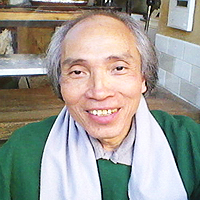Cleat-surface Interface and Lower Extremity Injuries
Published on: 28th September, 2023
Non-contact injuries with playing surfaces occurring from applied player impact and frictional forces are a major source of lower extremity injuries in competitive sports. Artificial playing surfaces are a common alternative to natural grass surfaces; however, these surfaces are associated with player injury as well. The purpose of this manuscript is to explore the existing literature on the relationship between cleat surface interface and lower extremity injuries in athletes and the importance of proper playing surface conditions alongside proper cleat selection to optimize injury prevention and athletic performance. As artificial turf has become more advanced, studies have shown the rates of lower extremity injuries of the knee, ankle, and foot have decreased to be more similar to the rate of injury on natural grass. However, foot and ankle injury rates remain significantly higher on artificial turf. Furthermore, certain studies continue to demonstrate an increased rate of knee injuries in football players, suggesting that significant performance differences still exist between artificial turf and natural grass. Future studies warrant focusing on ways to improve the cleat-surface interface of new-generation turf, emphasizing proper cleat selection, and playing surface conditions for injury prevention thus optimizing athletic performance.
A Rare Case of an Acquired Isolated Factor VII Deficiency was Discovered in a 23-Year-Old Female Patient
Published on: 20th September, 2023
Introduction: Factor VII (FVII) deficiency, a rare bleeding disorder, can manifest as an autosomal recessive congenital or an acquired coagulopathy. Acquired FVII deficiency, although infrequently reported, presents unique challenges in understanding its mechanisms and identifying underlying causes. Case presentation: We present a case of acquired FVII deficiency discovered in a 23-year-old female patient with no apparent underlying disease. The patient exhibited spontaneous ecchymosis and gingival hemorrhage, along with low FVII activity and isolated prolongation of prothrombin time. Extensive laboratory investigations excluded liver dysfunction, familial deficiency, vitamin K deficiency, and inhibitory antibodies. Prompt treatment with Fresh Frozen Plasma (FFP) and bypassing agents resulted in a favorable response and resolution of hematomas. Conclusion: Acquired FVII deficiency was identified with bleeding symptoms in association with prolonged prothrombin time and a low level of FVII activity. In literature, this deficiency has been associated with various conditions such as sepsis, aplastic anemia, stem cell transplantation, and neoplasms, although approximately 14% of cases remain idiopathic. Clinical outcomes remain generally poor, with limited complete remissions reported.
Impact of Traumatic Sports Injury on an Athlete’s Psychological Wellbeing, Adherence to Sport and Athletic Identity
Published on: 20th September, 2023
Introduction: Sports injuries can affect athletes across all ages, sexes, and levels of competition. The mental aspect of acute sports injury is often overlooked by coaches, trainers, and medical professionals. This study investigated if and how an acute traumatic sports injury affects an athlete’s psychological well-being, adherence to sport, and athletic identity. Methods: The study consisted of surveys sent to former or current athletes over 18 with one or more athletic injuries. The Qualtrics surveys were anonymous, and participants consented to the study within the survey. Results: There were 101 total participants (20.2% response rate) with an average age of 36. All reported one or more acute athletic injuries throughout their athletic careers. Specific survey sets were compared against each other using a variable correlation analysis (p - value < 0.05) and via Pearson’s Correlation.Conclusion: The results indicated that injury impacts the lives of athletes most significantly on the field and can harm their performance based on their perception of the severity of the injury. However, this decline in performance and decrease in confidence does not correlate to an athlete’s desire to leave their sport or how they identify as being an athlete.
Relationship between the Level of Spirituality and Blood Pressure Control among Adult Hypertensive Patients in a Southwestern Community in Nigeria
Published on: 19th September, 2023
Background: Spirituality has been strongly associated with good blood pressure control as it forms a strong coping mechanism in hypertensive patients. This hospital-based cross-sectional study was done to determine the relationship between spirituality and blood pressure control among adult hypertensive patients in rural Southwestern Nigeria to achieve good blood pressure control.Method: The selection was done by systematic random sampling technique. Socio-demographic and clinical information were obtained through semi-structured interviewer-administered questionnaires. The level of spirituality was assessed using the Spiritual Perspective Scale. Data were analysed using the Statistical Package for Social Sciences version 20.0. Statistical significance was set at p ≤ 0.05.Results: The mean age of the respondents was 61.1 ± 11.1 years. More than half (52.6%) had a high level of spirituality and more than two-thirds (67.1%) of respondents had controlled blood pressure. Respondents with a high level of spirituality were 4.76 times more likely to have good blood pressure control {p < 0.001, 95% CI (1.05-14.99)} than those with a low level of spirituality. Conclusion: Proper understanding and effective utilization of this relationship will assist health professionals and researchers in the appropriate integration of this concept into patients’ holistic care with the aim of achieving better blood pressure control among hypertensive patients.
Heart Rate Variability Biofeedback and Psychotherapy in Polycystic Ovary Syndrome: Description of a Case Report to Shed Light on this Understudied Condition
Published on: 20th September, 2023
Background: Although there is minimal information on the role of stress in PCOS, it is well-known that it may trigger the exacerbation and maintenance of the disease. Despite there being only a few studies in the literature, many researchers highlighted situations of autonomic hyperactivation characterizing PCOS. In light of these assumptions, the purpose of this study is to report on a patient who underwent psychological intervention to enhance stress management skills.Case: A 30-year-old woman was referred by the endocrinologist. From a clinical-psychological point of view, the condition of the patient was characterized by a modest psychophysiological activation. Interpersonal difficulties did not allow the patient to benefit from the social support of her loved ones, further favoring the maintenance of the excessive arousal generated by stressful life events. The patient was treated with HRV-Biofeedback integrated within cognitive-behavioral psychotherapy.Discussion: The multidimensional intervention brought benefits to the patient, teaching her better stress management strategies (i.e., reduction of psychological symptoms and improvement of hormonal tests). Keeping in mind the interplay between physiological, psychological, and interpersonal factors is fundamental in all psycho-somatic and somato-psychic disorders and is crucial to enhance the use of specific treatments to restore psychophysical well-being.
High-Grade Endometrial Mesenchymal Sarcoma: Current Status and Future Trends
Published on: 19th September, 2023
Endometrial Stromal Sarcoma (ESS) is a rare gynecological malignancy originating from endometrial stromal tissue. Representing only a tenth of uterine malignant tumors, ESS is categorized into Low-Grade (LGESS) and High-Grade (HGESS) based on nuclear division. Interestingly, prognostic studies have found no strong correlation between ESS prognosis and nuclear division activity. Undifferentiated Uterine Sarcoma (UUS) represents a spectrum of tumors with varied morphological, clinical, and prognostic features, and lacks a standardized naming convention. In 2014, the World Health Organization grouped ESS into LGESS, HGESS, and UUS based on clinical and pathological attributes. HGESS, despite its rarity, is notorious for its poor prognosis and low survival rate. Its early detection is complicated due to its asymptomatic presentation and ambiguous pathogenesis, leading to debates over treatment approaches. This article delves into the recent research developments concerning HGESS.
Black Holes and Time: Opinion
Published on: 15th September, 2023
This opinion essay is about how singularities may exist in a different dimension than we are, and on black holes and their time correlations. It also briefly mentions another way the universe may have been created.
Determination of the Effect of Zinc Acetate as a Doped Substance on the Properties of Cadmium Sulfide Nanomaterials by using a Hydrothermal Interaction Technique
Published on: 14th September, 2023
In the current work, cadmium sulfide nanoparticles (CdS) NPs were synthesized via the hydrothermal interaction technique. Especially, the deviation in zinc Acetate Zn(CH3CO2)2 with 0.5% 1.5%, and 2.25% was examined for its part in nanoparticles size. The nanoparticle size seems to reduce from 149.7 nm to 116.3 nm by enhancing the zinc acetate Zn(CH3CO2)2. With increasing zinc acetate Zn(CH3CO2)2 in CdS (Cadmium Sulfide) small lattice phase changes appeared due to angle peaks of diffraction shifting toward higher angle. The standard crystallite size and lattice parameters were analyzed through X-ray diffraction (XRD) characterization. The average crystallite size and volume unit cell were found to increment with increasing Zinc acetate Zn(CH3CO2)2 concentrations. Absorption peaks in the UV visible spectra corresponding to zinc acetate Zn(CH3CO2)2 of CdS (Cadmium Sulfide) were analyzed at various wavelengths of 368 nm and 369 and 371nm. These findings show the tuning ability of structural, and optical characteristics of cadmium sulfide (CdS) NPs.
Determination of the Potential for use of Plant Essential Oils as a Fungicide Against Fusarium Oxysporum (OG10)
Published on: 22nd September, 2023
This study aimed to determine whether the essential oils of thyme, ginger, and mint from medicinal aromatic plants can provide resistance to the pathogen Fusarium oxysporum in the maize plant. To this end, the antifungal effect of 0.1 ml, 0.25 ml, 0.5 ml, and 1 ml essential oil amounts was determined by the agar disc diffusion method. It was determined that concentrations containing 0.1, and 0.25 ml essential oil showed no antifungal effects, however, concentrations containing 0.5 and 1 ml essential oil had antifungal effects. The most effective concentration was found to be 1 ml of essential oil in all three species. The maize was grown under hydroponic conditions. Thyme, ginger, and mint essential oils (1 g/100 ml) were applied to the root medium of the grown maize plant on the 8th day. An F. oxysporum suspension containing 107 spores was applied after 24 hours and harvested 3 days later. When the reactive oxygen species (H2O2) and MDA amounts of the harvested plants were examined, it was observed that there was an increase in the population of F. oxysporum. However, applications of thyme, ginger, and mint essential oil have been observed to significantly reduce these. It was also determined that essential oils protected the plant against F. oxysporum by increasing antioxidant enzyme activities. Although these three essential oils applied have antifungal properties, it has been observed that the best effect belongs to thyme essential oil. The results show that essential oils of thyme ginger and mint can be used as potential fungicides against the pathogen F. oxysporum in maize cultivation
Analysis of Microbial Diversity and Community Structure in the Rhizosphere of Cigar Tobacco in Different Agroecological Zones
Published on: 13th September, 2023
To reveal the influence of ecological zones on the structure of microbial communities in cigar rhizosphere soils, Yunnan's cigar tobacco production region was first divided into three ecological zones. Soil samples were collected at maturity and the community structure of fungi and bacteria in the rhizosphere soil was analyzed using 18S rRNA and 16S rRNA high-throughput sequencing techniques. The results showed that the dominant fungi were Ascomycota, Mortrellomycota, and Basidiomycota, and the dominant bacteria were Ascomycota and Proteobacteria. The dominant genera and relative abundances of fungi and bacteria differ at the genus level. Ecoregions may affect the community structure and distribution of fungal and bacterial diversity in the rhizospheric soil of cigars at maturity, which may provide a theoretical basis for the selection of high-quality cigar-producing regions in the future.




